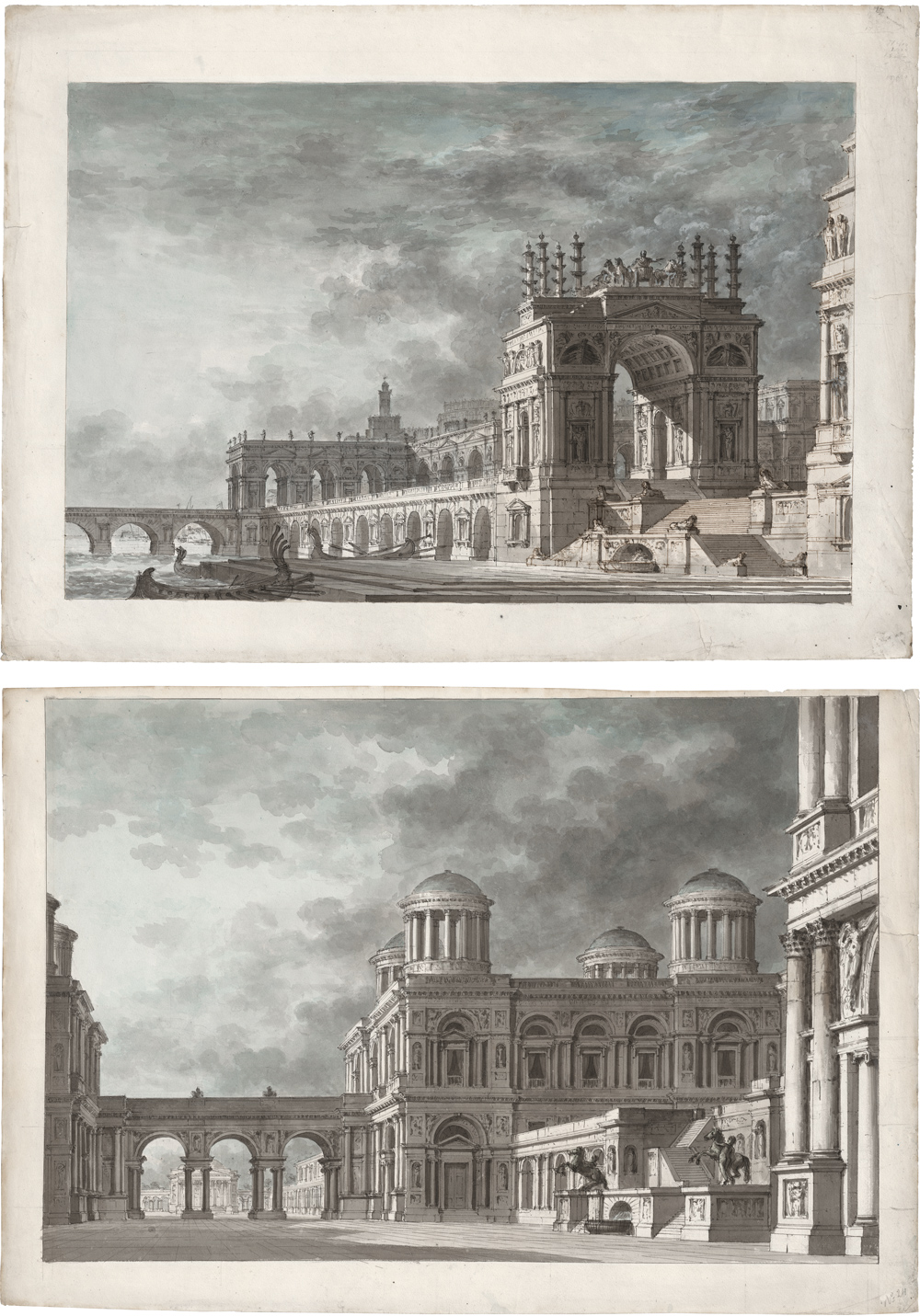Loading the page ...
Antonio Basoli
(1774 Casteluelfo – 1848 Bologna)
Two Designs for a Classical-style Ideal Architecture. Pen and greyish-black ink over pencil, grey and blue wash, white heightening. 44.1 x 60.9 cm and 40.8 x 60.2 cm respectively. Circa 1800–1810.
Antonio Basoli is considered to be one of the most ingenious and prolific of Italian theatre painters and stage architects in the first half of the Ottocento. Having undergone extensive training at the Accademia Clementina in Bologna, where he was taught amongst others by Gaetano and Mauro Gandolfi, Angelo Venturoli and Vincenzo Mazzi, Basoli was appointed a scene painter at the Teatro Taruffi in Bologna in 1793 even before he had completed his studies. He broke with the Baroque tradition of Bibiena at an early stage and embraced Neo-classicism. Basoli’s artistic activities were concentrated to an almost excessive degree on theatre painting, which explains the very large number of stage designs he produced, most of which have survived in the form of reproductive prints. In the course of his successful career Basoli was active inter alia in Triest, St. Petersburg, Rome and Milan, although Bologna remained the centre of his activities. His lengthy period as a teacher at the city’s academy (1815–1848) enabled him to exert a lasting influence on the following generation of artists.
Both these magnificent architectural designs, which have been executed with the utmost graphic sophistication, show Basoli at the height of his art. A majestic ancient triumphal arch, rendered from a very abrupt and foreshortened perspective, serves as the entrance to a spacious Palladian-inspired loggia architecture located on a harbour basin. Three unmanned Roman galleys enhance the classical atmosphere. The deliberate renunciation of any staffage figures or anecdotal elements gives the composition a remarkable dramatic intensity, while the depiction of a palatial building crowned by four round temples, which serves as a companion piece, is indicative of a striving for classical harmony and ideal proportions.
Contact us for further information